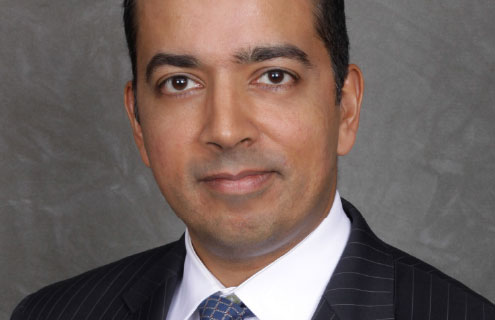Broadridge
In a fast-changing post-trade world, the utility model has a part to play. Broadridge’s Vijay Mayadas explains
How do utility models fit into the post-trade space?
Pretty much all banks are in agreement that post-trade functions should be in a utility, but there is always a challenge as to how to execute that.
Given the complexity inherent in post-trade, Broadridge’s view is that it’s best to start with what exists already and to expand on that, rather than to build something new from scratch, and that view is quite attractive to the market.
Our Global Post Trade Management (GPTM) platform is intended to respond to factors already existing in the market. In particular, global banks are looking for one global platform, as opposed to having one in the US, one in Europe and one in Asia.
The idea is to invest in integrating what we already have in different countries, building a highly flexible ‘data fabric’ underneath, which can give banks a global view of their positions and their profit and loss, enabling them to launch analytics on global risk and other data analytics applications, for example.
Existing post-trade platforms can come together on a global basis, and investing in an underlying big data fabric layer can allow for better analytics, risk management and visibility into global positions.
It can be more accurate, faster and more global, and it can be more efficient as well, as banks can process various different asset classes through a single, streamlined platform.
Historically, a lot of post-trade infrastructure has been quite monolithic.
Using this platform method, we can break things down and build new components, while also re-configuring existing elements to optimise how they serve our clients.
How important is it to standardise processes?
If all banks are working to a common model in terms of how trades are processed, then they all achieve better scale and work much more efficiency. That’s the core principle behind any utility model.
It makes sense to have the same standards, as that reduces the cost of managing the platform, and that means the end clients get the cost savings they’re looking for. If Broadridge has all of its clients, or a large percentage of them, on one platform, then we can help create ‘network value’ for them, for example, driving efficiency around settlement processing.
At the moment, a lot of banks conduct post-trade services outside of their own infrastructure, so if all of that takes place on one platform it can reduce the cost and inefficiency that is often associated with transactions between banks.
There is also a link to regulation here in that, if there is a new regulation, a shared platform will be able to support it for multiple banks, globally. There is no specific regulatory drive to move onto a common post-trade platform—the regulators tend to try to be technology, and vendor, agnostic—but there is certainly a potential benefit to be had from working on a shared platform. Things can be done much more quickly, and the risks can be shared across the industry as well.
Equally, you can assess global risk more easily on a shared platform. If regulators are looking to understand global risk, then their ability to do that can be improved.
Can blockchain technology be applied here?
Broadridge is investing in applying blockchain to our GPTM platform. We are testing proofs of concept as to how we can create more efficiency in the clearing and settlement process.I look at blockchain as a protocol. It could be as transformative to our industry as something like packet-switching protocol was to the internet.
However, in the near term there are some very high expectations of the technology. As we know from history, people can get quite excited about new technologies in the short term, but underestimate their ability to transform things in the long term.
Again, if the industry is going to change in a big way, such as changing the way clearing and settlement is conducted in an entire market, then every player needs to cooperate and work off of the same platform.
Building a specific solution for one bank doesn’t require input from the rest of the industry, but standards and collaboration are required in order to achieve bigger things. For blockchain to truly be adopted by the industry, some kind of standard will be required.
What will the industry look like in 20 to 30 years?
It’s hard to imagine what it will be like. Given how much in financial services is driven by technology, and how rapidly technology is changing, I don’t imagine that it will even be very similar to today.
At the same time, it has taken a very long time to migrate from a world of T+3 to T+2, and longer still to get to T+1. In this industry, change can take time. If I was to speculate, I would suggest that new ways of exchanging value will emerge, potentially evolving outside of the existing system, where pure peer-to-peer trading is a reality.
New asset classes will be created that can be traded outside of the existing infrastructure—bitcoin is perhaps the first major example of this already happening on the fringes of the industry, but, of course, back in the 90s that’s where the work on the internet was happening, too.



